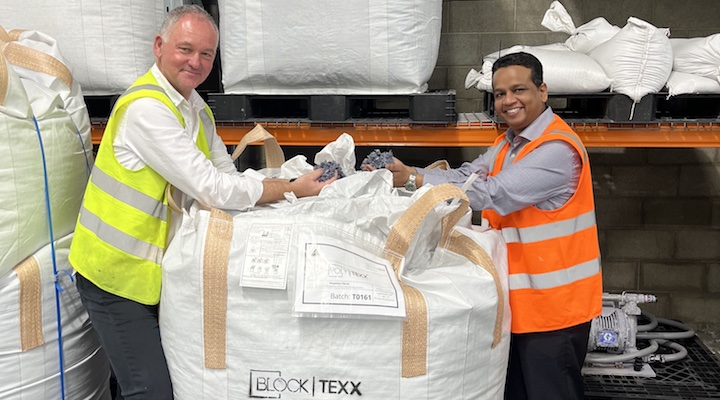In an Australian-first partnership, BlockTexx and Elk have teamed up to bring an innovative solution to bring end-of-life garments into the circular fashion economy. “I don’t think it matters that you’re small, it’s what you’re doing,” Tonia Bastyan, design and marketing manager at BlockTexx, told Inside Retail. BlockTexx is an Australian company that has found a way to break down textiles into raw materials, diverting fashion waste from landfill on a massive scale an
ale and now a global stage.
In the face of the large-scale problem of textile waste, BlockTexx is hoping that its partnership with Elk will guide and inspire the fashion industry towards circularity.
“If you take a look at our vision and our mission, it’s all about operating a transparent and responsible business with respect for people and the planet,” head of sustainability at Elk, Dr Vaibhav Gaikwad, told Inside Retail.
“We don’t believe that our responsibility as a brand ends after we just sell the product – now it goes beyond that – we want to take responsibility for products even after they’re sold and for their end of life as well,” he added.
Transparency is key
This collaboration between Elk and BlockTexx is the product of networking and a cold LinkedIn message – Elk reached out to BlockTexx wanting to find a responsible recycling avenue for its end-of-life products. In other words, garments that can’t be resold or reworked for a new customer.
“We want to ensure that we have a responsible recycling avenue and the technology was absolutely perfect for us, so innovative and so apt for what we were looking for – and within a couple of days, they responded,” Gaikwad elaborated.
BlockTexx is already processing 300 of Elk’s end-of-life garments by shredding the fabric and converting it into two industry-ready products, CellTexx or Polytexx.
For Bastyan, accountability and transparency are paramount to BlockTexx and its “feed stock customers”, like Elk, so all parties have visibility over the garments and can be assured that they are not being exported or disappearing offshore.
“We have what is called TraceTexx, because we are built on a blockchain – hence the reason we called BlockTexx – which means that we know exactly where all the textiles are,” explained Bastyan.
“It means that at every single point, we can digitize where those textiles are in the process – that also gives people peace of mind to know exactly what has happened to their garments as it passed through the process,” she added.
Traceability and transparency have become a priority in the sustainability space after H&M was implicated in a Change Markets investigation that found an item of clothing that had been donated to H&M’s Oxford Street flagship store in a wasteland on the outskirts of Mali.
BlockTexx is now looking to extend its commitment to creating a circular economy by streamlining its recycling process and continuing its mission to reduce textile waste.
“There’s another thing that we will be launching shortly, which is actually a trust badge, which is our logo, and this is where we can actually embed this into garments that have been redesigned for our end-of-life process,” Bastyan shared.
“If I look at Elk’s [garments], they are almost 100 per cent recyclable for our process and you can reach a point where garments can be designed for our end-of-life process,” she added.
Reduce, Renew, Recycle
Elk’s partnership with BlockTexx is not its only program promoting sustainability and circularity – at every touch point in its business, Elk has prioritized environmental responsibility.
Elk’s Renew take-back program invites customers to bring back preloved Elk garments to be repaired, resold or repurposed.
If the items are wearable, customers can exchange them for a $10 Elk voucher and any items that cannot have a second retail life will be decommissioned and directed to BlockTexx.
“This is a brand that’s doing everything that they can to be responsible for their garments, not just up to the point of the sale, but even after that,” concluded Dr Gaikwad.
“We hope that this creates a cascading effect within the industry, and not just for our consumers, but also other stakeholders within and beyond the industry.”

